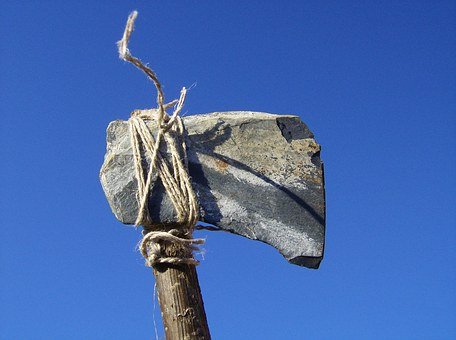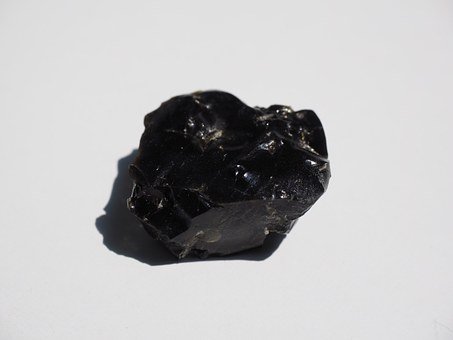Stone-Age Knapped Blade vs Surgical Steel Scalpal

During the Stone-Age Man started knapping stones in order to make weapons and tools.
Obsidian, a type of volcanic glass was one of the finest materials to use among the most skilled of artisans of that time, and thanks to technology, we now have a better insight as to why this was.

Obsidian can produce cutting edges many times finer than even the best steel scalpels.
They might not look like the flint-knapped knives of Neolithic man anymore, but they have however stood to stand the test of time!
Measured at 30 angstroms (an angstrom being a unit of measurement; 1 angstrom = one hundred millionth of a centimeter) the obsidian scalpel can rival diamonds fineness its edge on any day!
Let me put it this way, the most household razor blades are 300 to 600 angstroms, this puts obsidian in a position to make even the sharpest materials that can be produce through the use of nanotechnology stop and stare - so to speak.
Here is some insight from Dr. Lee Green, professor and chairman of the Department of Family Medicine at the University of Alberta, whom stated that he routinely uses obsidian blades.
He explained that steel scalpels at a microscopic level have a rough cutting edge that tears into tissue, a function of the crystals that make up the metal. Obsidian, meanwhile, cleaves into a fine and continuous edge when properly cut.
Dr Lee Green
"The feel is very different, because obsidian has no 'bite,' " he said. "If you look under the microscope at a steel scalpel edge, it looks almost like a saw. It has teeth, whereas obsidian is smooth even microscopically.
"It's a very different feel to work with, and you have to practice before you start using it in surgery.
"You also have to be careful not to nick yourself with it, because you don't even feel it!"
It is believed that during the stone age medical incisions were made with obsidian blades due to the fact that they healed faster.
Dr Green also did a surgical experiment on a colleague whom needed a mole removed. He cut out half of the mole with a surgical scalpel and the other half with an obsidian scalpel.
"What's really fun is seeing it heal," he said. "Four weeks later, the difference was quite remarkable. There was very much a difference in scarring."
The manufacturer Fine Science Tools situated in Germany produces Obsidian scalpels for use in specialized situations for example when the client has an allergy to steel or other metals.

Just goes to prove, Nature is still one step ahead of us!
And always provides for us.
Is it not time we start looking after the planet we live on?


I remember knapping ax heads at Early Man Site in high school.
Do you still knap?
No. Now the only tools I build is in software
Its a shame! However software tools are also neccesary...
I have started playing around with it recently. Not tools, just small scale knapping. (I made a pendant lol )
Plus I used rotary tools so it doesnt quite count as knapping.
But Ill get there
This post has been ranked within the top 50 most undervalued posts in the second half of Dec 12. We estimate that this post is undervalued by $8.14 as compared to a scenario in which every voter had an equal say.
See the full rankings and details in The Daily Tribune: Dec 12 - Part II. You can also read about some of our methodology, data analysis and technical details in our initial post.
If you are the author and would prefer not to receive these comments, simply reply "Stop" to this comment.
Thank you